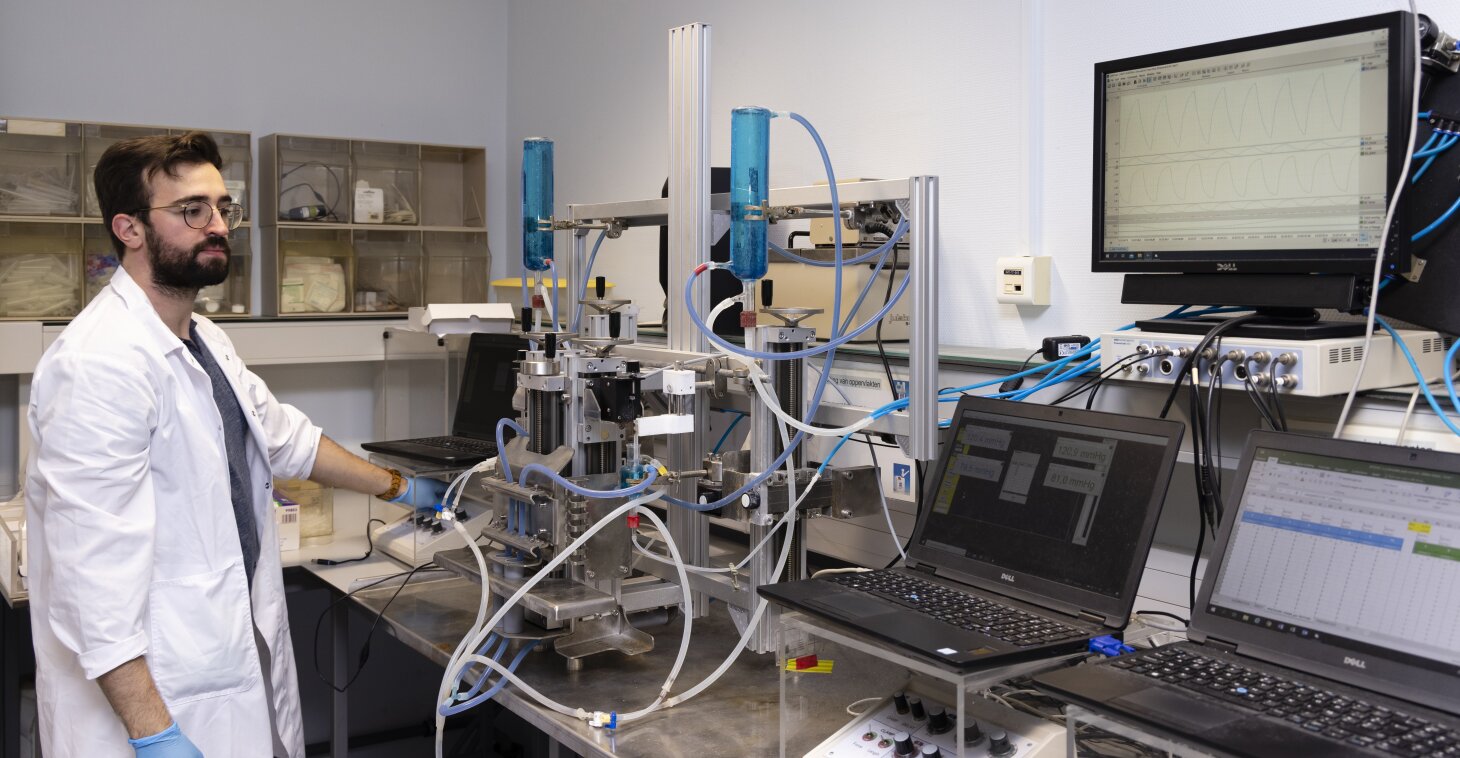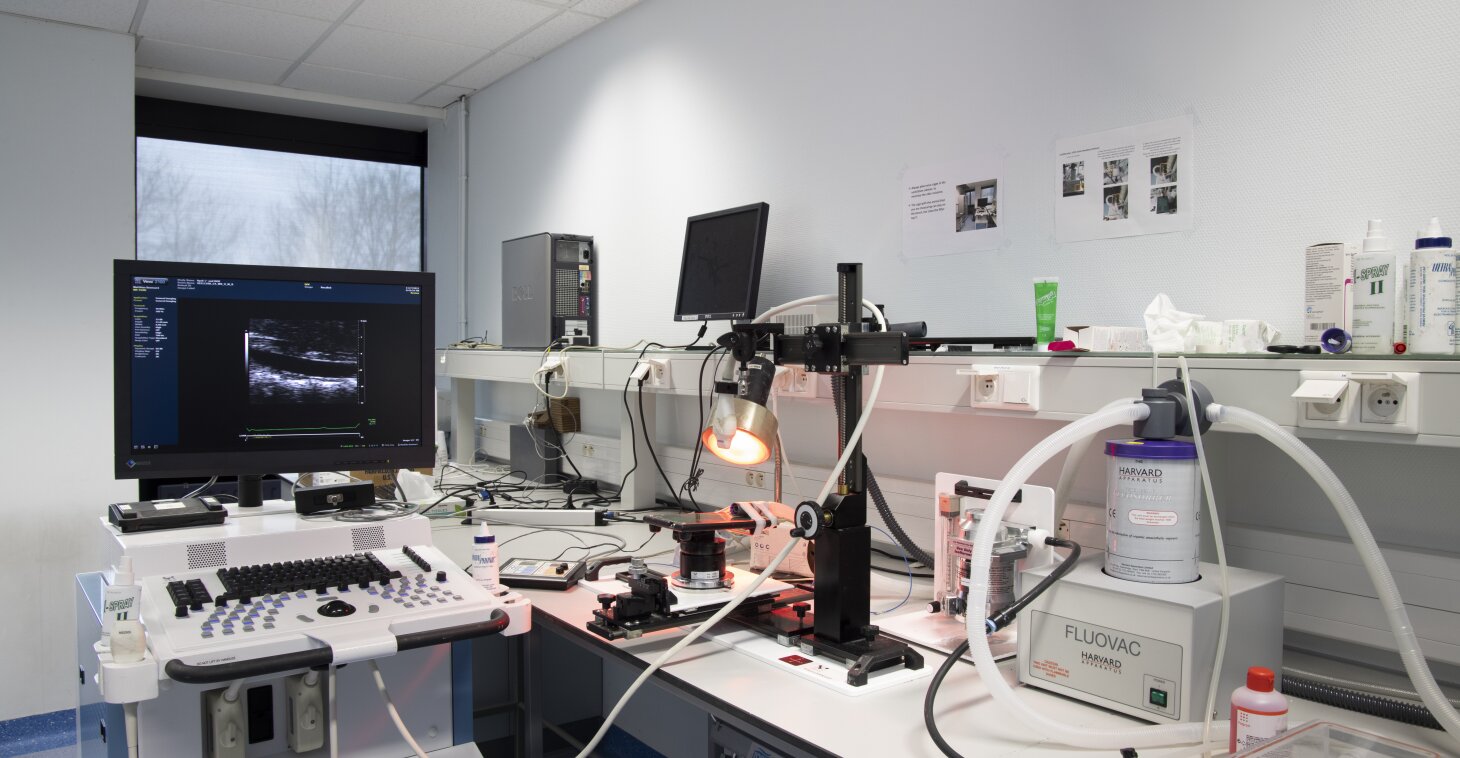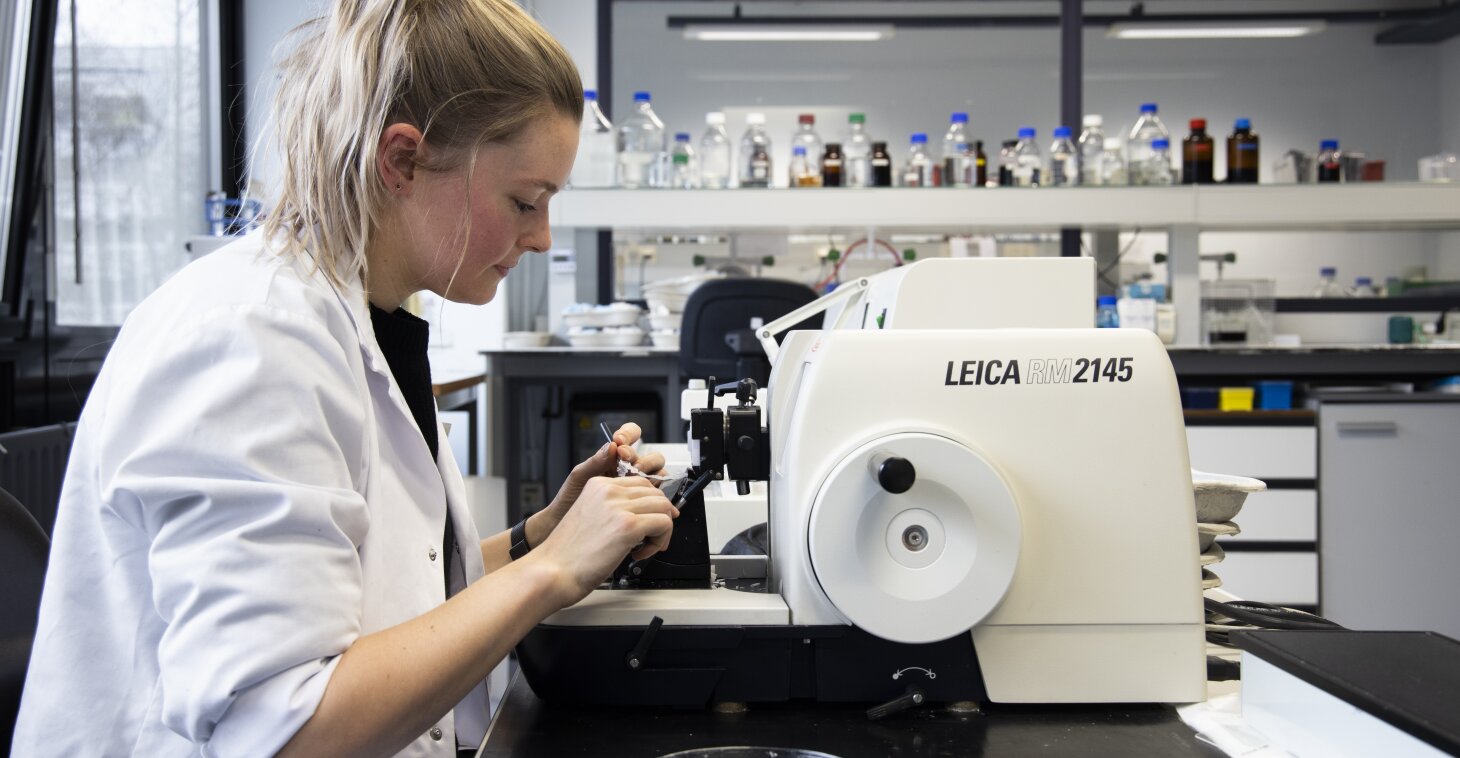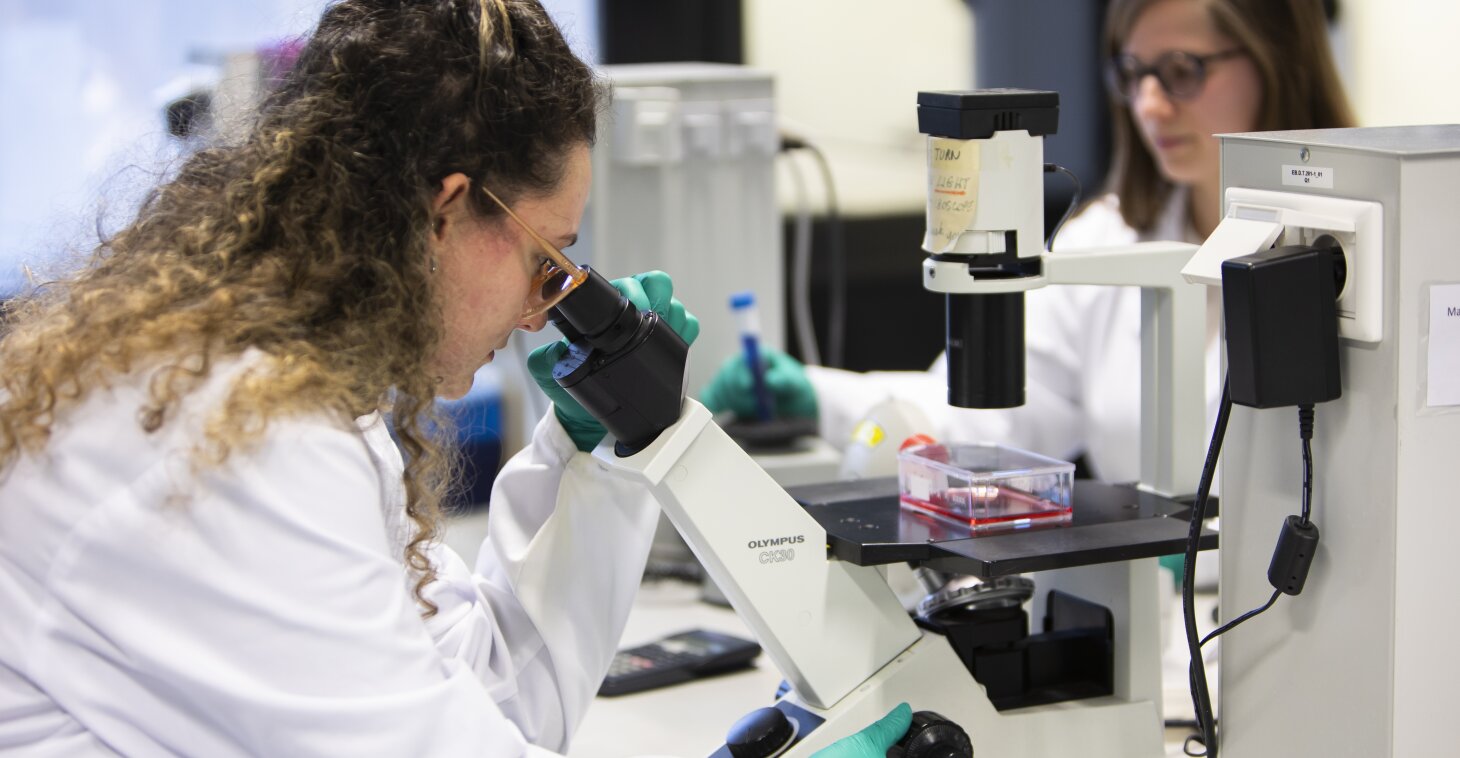Equipment
The research group PhysioPharmacology has all the technology and expertise to conduct competitive research in the field of atherosclerosis and heart failure:
Vascular surgery
The research group has a fully equipped surgical station with a dissecting microscope (SZ40, Olympus) and a mechanical ventilator for mice (Minivent 845, Hugo Sachs). Equipment for biological monitoring (ECG, pulse oximeter, pressure-calibrator) and Sevoflurane anesthesia is available, as well as a complete set of surgical instruments, a rodent operating table, heating pads, cautery and syringe infusion pumps.
In vivo cardiovascular haemodynamics
Following in vivo techniques are available in the lab:
- Intra-cardiac pressure-volume loop equipment (SPR-839, Millar Instruments)
- Non-invasive blood pressure measurements (CODA, Kent Scientific) and double lane treadmill facility (LE8706, Panlab)
- Blood gas analysis (ABL77 Radiometer)
Echocardiography
The research group has an ultrasound imaging unit (Vevo 2100, Visual Sonics) for full cardiovascular imaging in both mice and rats. Equipment for biological monitoring (ECG, respiration, temperature) and Sevoflurane anesthesia is available.
Stenting
Implantation of stents in arteries of rabbits can be performed using a Mobile X-ray FlexiView 8800 C-arm (GE Medical Systems).
Ex vivo vascular reactivity
A novel setup is available for the ex vivo analysis of the mechanical properties of aortic segments at physiological pressure and frequency (ROTSAC- Rodent Oscillatory Tension Set-up to study Arterial Compliance). Vascular reactivity of large vessels can also be measured in isometric contraction studies. Both organ bath setups are fully equipped and provided with a data acquisition system (ADInstruments). A myograph (Multi Myograph model 610M) and a flow/pressure perfusion system are available for small vessels.
Ex vivo cardiovascular haemodynamics
Papillary heart muscle mechanics can be measured with a isometric – isotonic force/length transducer system (designed in-house).
Histology and immunohistochemistry
The research group has a fully equipped lab for histology, with a microtome for paraffin sections (Leica 2145) and plastic sections (Leica RM2165), a cryostat for frozen sections (Microm HM500), a paraffin embedding system (Medite type TBS88), a rotary automatic tissue processor (Leica TP1020) and an automated slide stainer (Gemini AS, Thermo Fischer Scientific).
Microscopy
Specimens can be imaged by either transmitted light or epi-fluorescence using an Olympus BX40 microscope, equipped with a fully automated imaging system for multiple slides, or an Olympus BX40 microscope for fluorescence and CCD imaging system (PCO Sensicam). A digital imaging system (Celena S, Logos Biosystems) is available for high resolution, multi-channel fluorescence images of cells in culture.
Electrophysiology
Possibility to use voltage clamp and patchclamp (Heka). Calcium can be measured with fluorimetry and fluorescence microscopy.
Cell culture
The cell culture lab (biological containment level L2, biohazard level RK2) is fully equipped with 4 biohazard laminar flow cabinets (Clean Air and Steril-Antares), 2 CO2 incubators and an automated cell counter (Countess II FL, Thermo Fischer Scientific).
Molecular biology
All standard molecular biology techniques are available in the lab: polyacrylamide gel electrophoresis, agarose gel electrophoresis and imager (InGenius 3, Syngene), western blotting, infrared imager for western blots (Odyssey Sa, Li-Cor), ELISA, microplate spectrophotometer (Epoch, Biotek), spectrophotometer for RNA and DNA samples (Nanodrop ND-1000), conventional PCR (2720 Thermal Cycler, Applied Biosystems and PTC-200 Thermal Cycler, MJ Research ) and qPCR (QuantStudio 3 system, Applied Biosystems).
Water purification
Purification system for tap water (Millipore Elix 20 and Simplicity185 system) is available.
Facilities for electronic research and mechanical construction
Lt Physiology Classes (cloud-based, ADInstruments): a learning platform with simulations of physiology experiments



